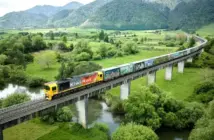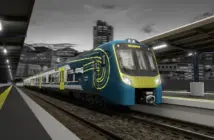This project has had an incredibly long history, with previous versions incredibly expensive, somehow detrimental to transport outcome targets and massively environmentally damaging, Greater Auckland reports

The government is beginning public engagement on options for the Waitemata Harbour Connections project.
Transport Minister Michael Wood has unveiled five scenarios for one of the most significant city-shaping projects for Tāmaki Makaurau in coming decades, the additional Waitematā Harbour crossing.
“Aucklanders and businesses have made it clear that the biggest barriers to the success of Auckland is persistent congestion and after years of inaction by the previous government we are on track to fix it,” Wood says.
“We want an unclogged, connected, and futureproofed transport network so Aucklanders can get to work on time, and don’t need to wake up earlier just to get their kids to school – it’s vital that we have a harbour crossing that works for the city.
“The additional Waitematā Harbour connections, for which construction will begin in 2029, will providing a future proofed solution for people wanting to travel across Te Waitematā be it by car, bus, light rail, walking, cycling, or truck as fast as possible.
“After considering feedback from Aucklanders, we’ve developed five scenarios for future transport connections across Te Waitematā including both bridge and tunnel options. The scenarios also include ways to connect to growing residential and business hubs on the North Shore.
“Each scenario includes a new walking and cycling link across Te Waitematā, a new light rail link that will connect to Auckland Light Rail in the City Centre, and will build generations of resilience into State Highway One for private vehicles and freight.
“Through the Government’s investment we a building a linked up rapid transit network across the city, to provide faster, safer, low-carbon travel. This connection, with Light Rail at its heart, is key to delivering this vision.
“Rapid transit already delivers tens of millions of journeys across Auckland every year through the heavy rail network and the Northern busway, but we know that we have to keep investing to build the fully integrated, linked up network we need for a modern, connected region.
“A new rapid transit connection from the city centre to the North Shore will fully integrate with other projects including Auckland Light Rail and rapid transit to the Northwest to allow people to travel seamlessly across Auckland,” Wood says.
Feedback provided will help shape the final decision on the preferred option for the crossing which will be confirmed in June 2023.
A 2020 business case made it clear that a rapid transit connection should proceed ahead of and new road capacity, as well as also highlighting the opportunity for significantly lower costs through building the crossing as a bridge rather than a tunnel. More recently, the next phase of planning has been digging into the details of tunnel and bridge options in more detail. Today we see the results of that.
At its heart, this consultation is a discussion of various combinations of bridge and tunnel options for road and rapid transit crossings, as well as how a walking and cycling bridge would be provided for. The performance of each option against a bunch of different criteria (including cost, at a very very high level) is also presented. The map below shows the variety of different alignments being considered for crossing options between the city and Takapuna:

The high level assessment of bridges and tunnels continues Waka Kotahi’s long-running ’tilting of the scales’ towards tunnels, by underplaying what the cost different might be. It’s also worth noting the higher embodied carbon emissions from constructing a tunnel – as we know from the Auckland Light Rail work that tunnels can take many decades of mode shift benefits before they offset the increased emissions from their construction.


- Option 1 has tunnels for both road and rapid transit, with walking and cycling provided for on the existing Harbour Bridge’s clip-ons. The assessment of this options gives it five dollar signs for cost (each apparently equating to $5 billion increments), which suggests an eye-watering total cost of around $25 billion. The route via Belmont and Hauraki to Takapuna is a bit odd – serving an area that seems allergic to any growth – but is definitely better than previous tunnelled rapid transit alignments that seemed to go out of their way to avoid land.
- Option 2 builds a new bridge adjacent to the current one for road, rapid transit and walking & cycling. This is by far the cheapest option, but amazingly is still forecast to cost around $15 billion. Presumably this cost includes extending the light-rail up to Albany, even though this isn’t shown on the map.
- Option 3 builds a new bridge from near Wynyard Quarter over to Northcote Point for road and active modes, and then supplements this with a tunnel via Birkenhead and Northcote town centres. This option is forecast to cost around $20 billion as it has four dollar signs in its cost assessment. The idea of serving Birkenhead and Northcote with rapid transit is new, compared to any previous work, and potentially has some merit. The Onewa Road corridor is a very busy public transport route and makes up quite a large part of future bus volumes from the North Shore to the city centre – so taking pressure off this will have some major benefits. Then Northcote, which is growing a lot through Kainga Ora redevelopment, is a bit of a ‘black hole’ in terms of being served by good public transport. It will be interesting to see what the public think about another bridge across the harbour that isn’t right next to the current one.
- Option 4 is a bit of a merge of options 1 and 2 by the look of it. A smaller new bridge is built next to the current one, with a road tunnel also built. It’s not clear how many lanes would be in the road tunnel(s), as presumably unlike option 1 walking and cycling is provided on the new bridge, meaning the current clip-ons don’t need to be reallocated for active modes. It would be a worry if this option had more than 5 peak direction traffic lanes, as this is what resulted in previous work flooding the city centre with cars. This option also appears to cost around $20 billion.
- Option 5 is almost identical to option 4, except the new bridge for rapid transit, walking and cycling comes off the end of Wynyard Quarter, rather than being tucked in next to the current bridge. It also is expected to cost around $20 billion.
As per the earlier table looking at bridges versus tunnels, the more detailed analysis of the options seems to play down cost compared to other factors.

While most of the work seems to have focused on the crossing part of the overall project, there appears to have been some thinking about what happens north of Takapuna for rapid transit.

Perhaps what stands out the most here is the absence of information about costs. Are the costs for this part of the project already included in the $15-25 billion option costs? Or are they even more than that? How does the cost of upgrading the busway to light-rail compare against an incredibly long tunnel through Glenfield? It’s hard for the public to provide feedback when so much information is missing.
Looking ahead, a timeframe slide suggests that the earliest construction could commence is around 2029, with each option having a 10-15 year total construction horizon.

Somewhat bizarrely, the Government has taken this and now said that they intend to begin construction in 2029 – bringing the project forward from what previous work suggested was needed. While it’s always good politics to say that you’re bringing a project forward and getting on with making it happen, this is a bit of a punch in the face for other projects that are clearly much more urgent – like proper rapid transit to the Northwest.
On the one hand, it’s good to see a proper analysis of different bridge and tunnel options for the first time in a very very long time, and a clear shift away from the “combined road and rail tunnel” that Waka Kotahi have been pushing for the past decade.
It’s also good to see some new rapid transit options that serve new areas like Birkenhead and Northcote being thrown in the mix.
But on the other hand, the extremely high costs of this project – especially when you consider it alongside the madness of $15-30 billion Auckland Light Rail – makes the whole thing seem extremely fanciful. Especially at a time when Auckland Council is considering cutting back on extremely basic services and the government needs to spend billions on rebuilding basic transport infrastructure following Cyclone Gabrielle and the Auckland floods.
It will be hard to take seriously the selection of any option other than the lowest cost option 2.








